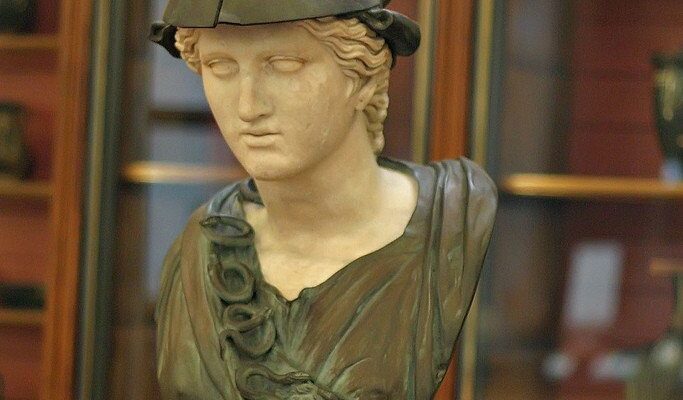British Museum
The British Museum is one of the greatest museums in the world. It’s not just the number of exhibits, but also the overall quality of the collections housed here.
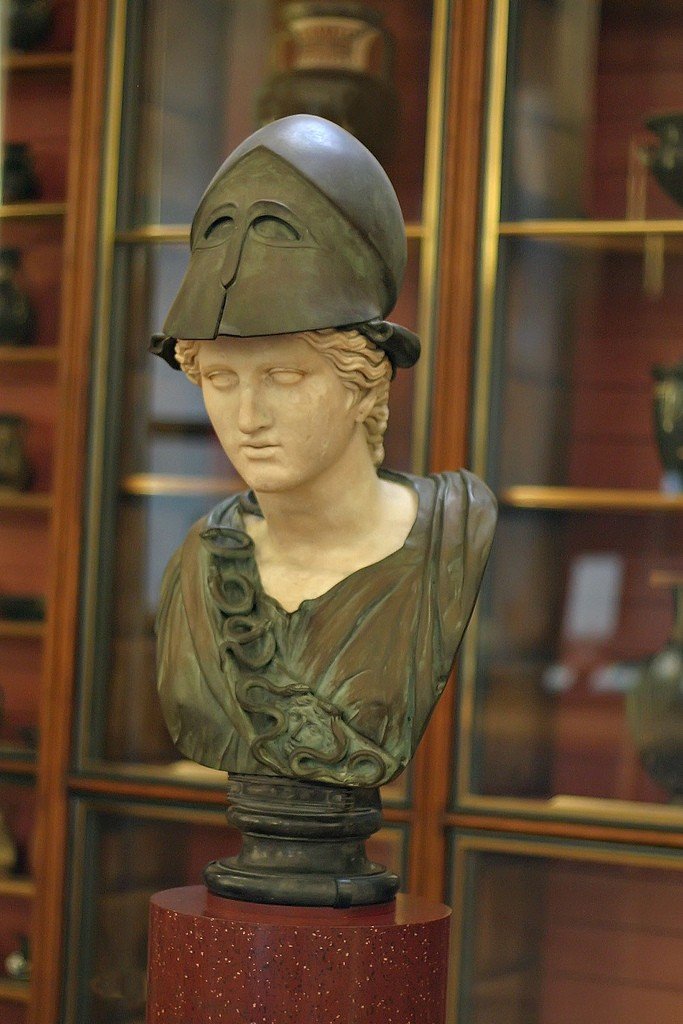
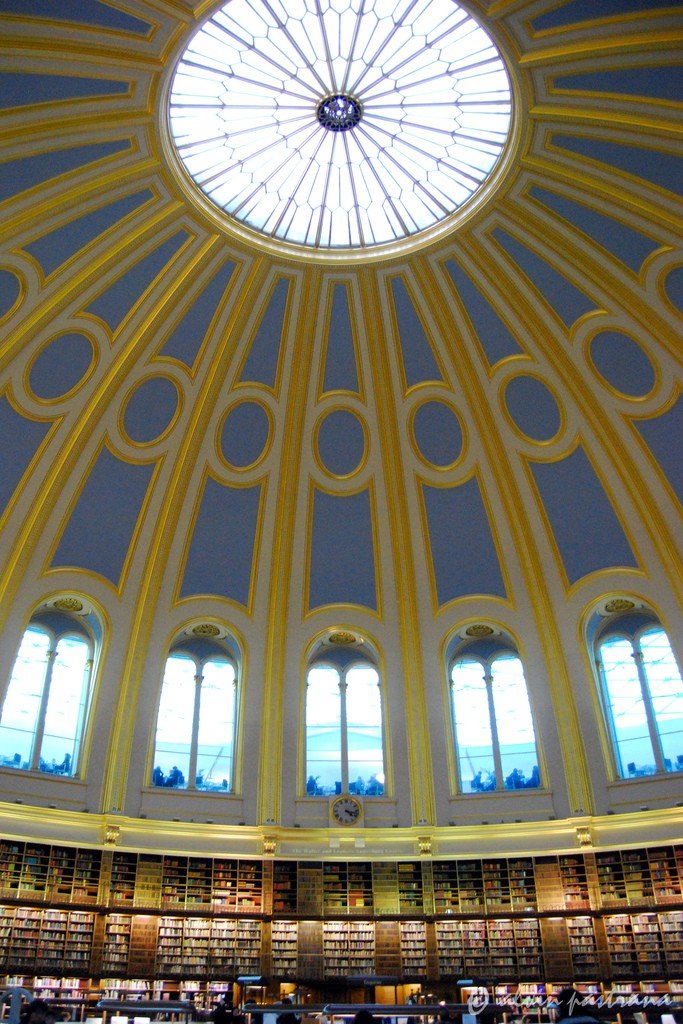
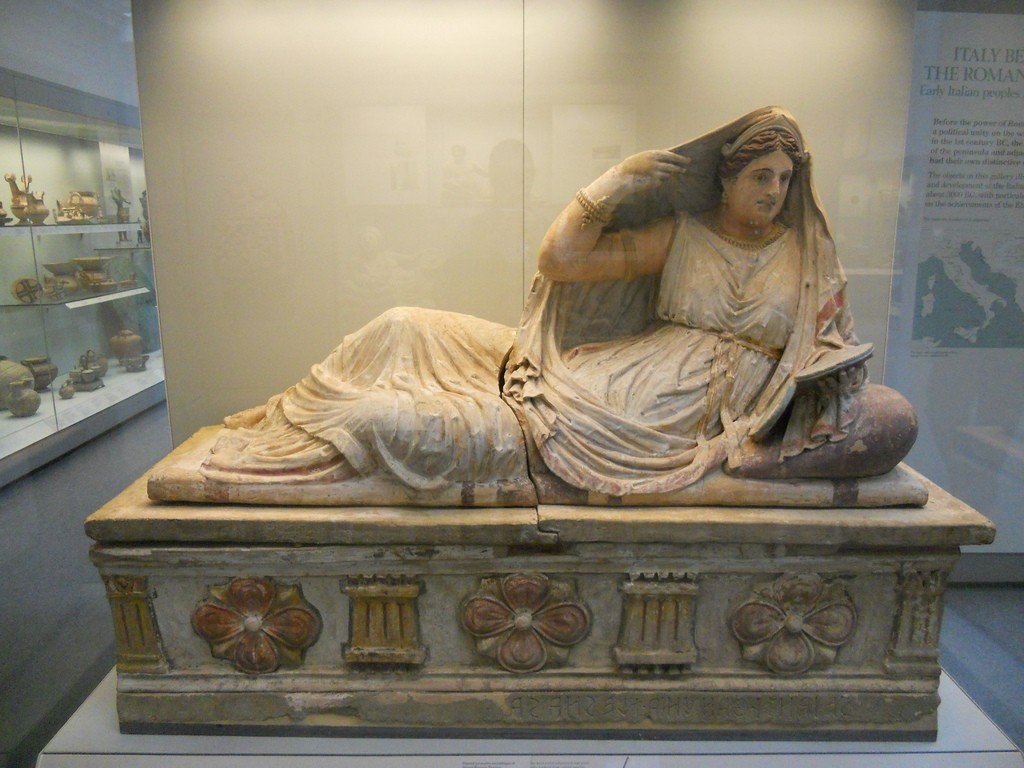
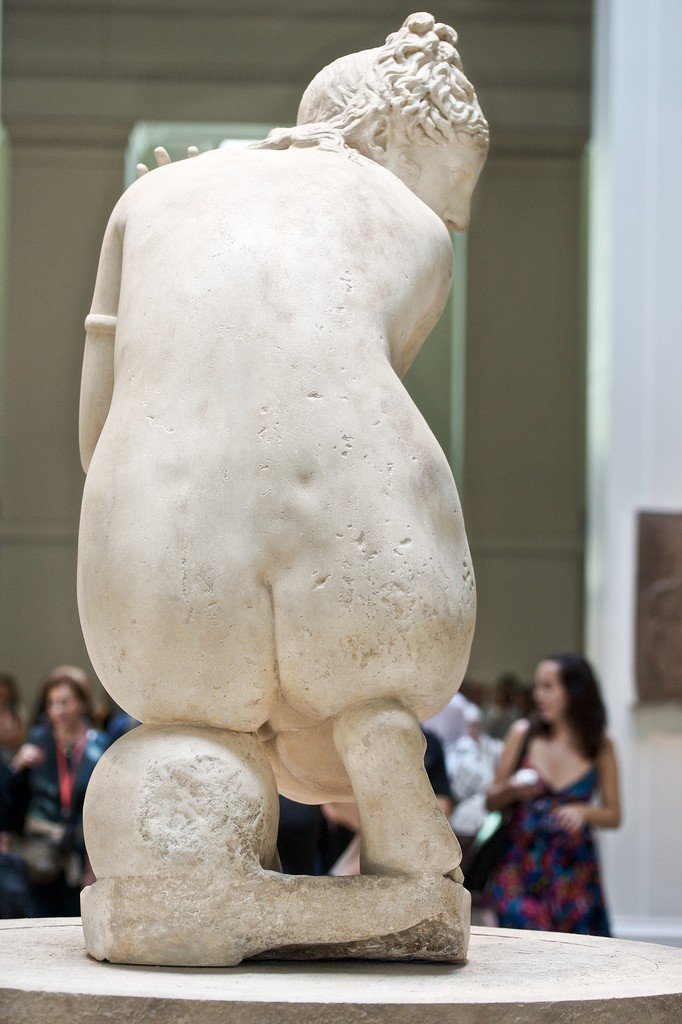
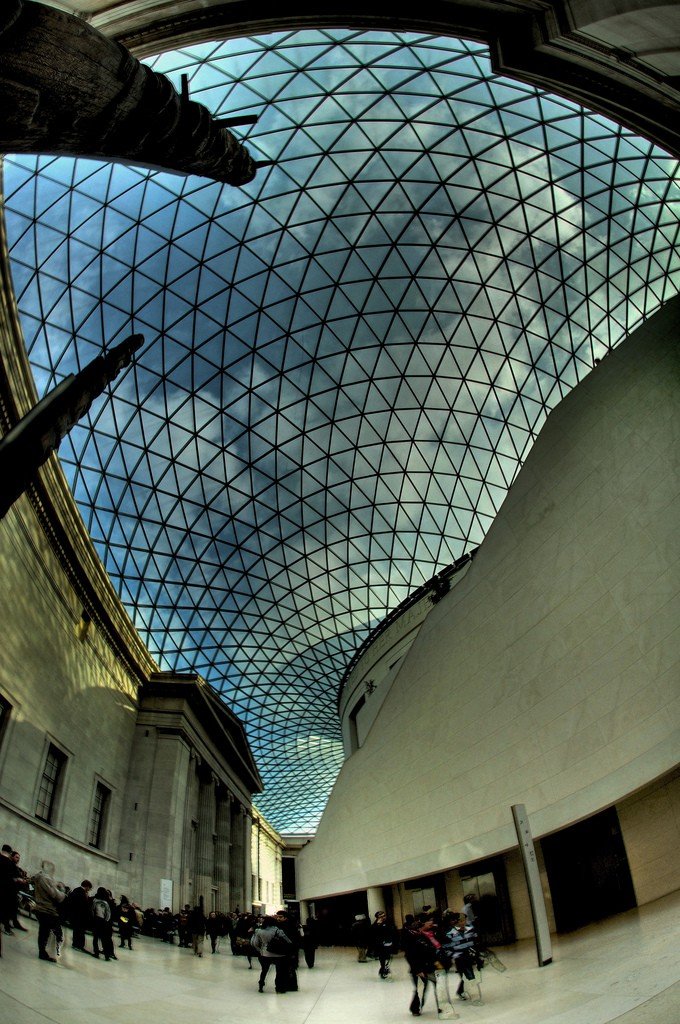
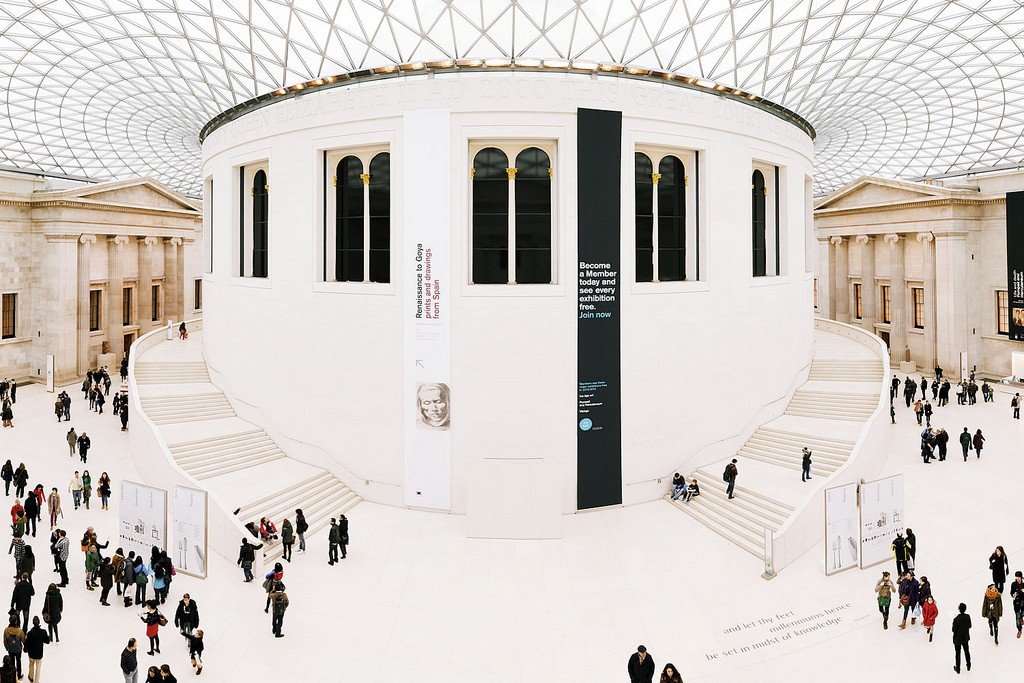
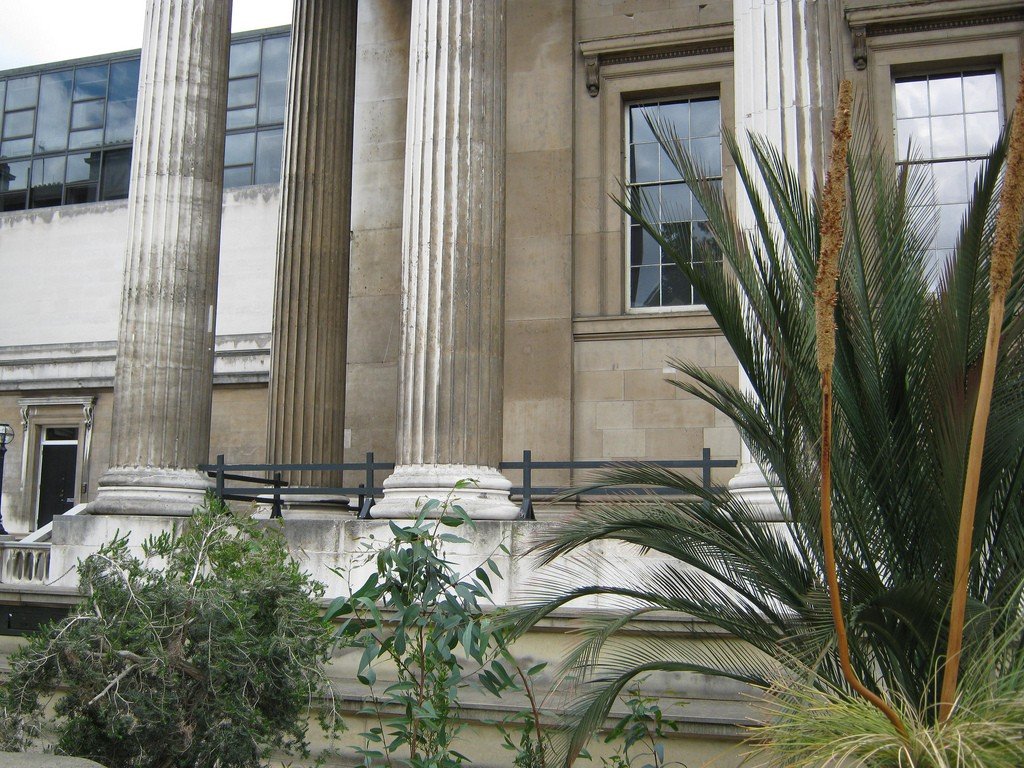
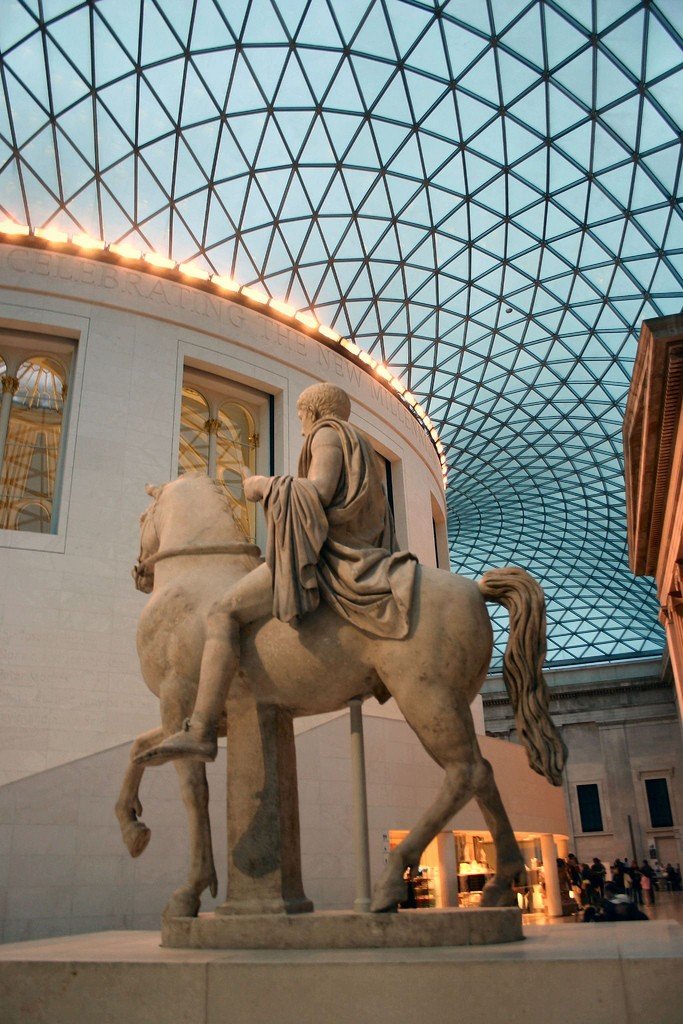
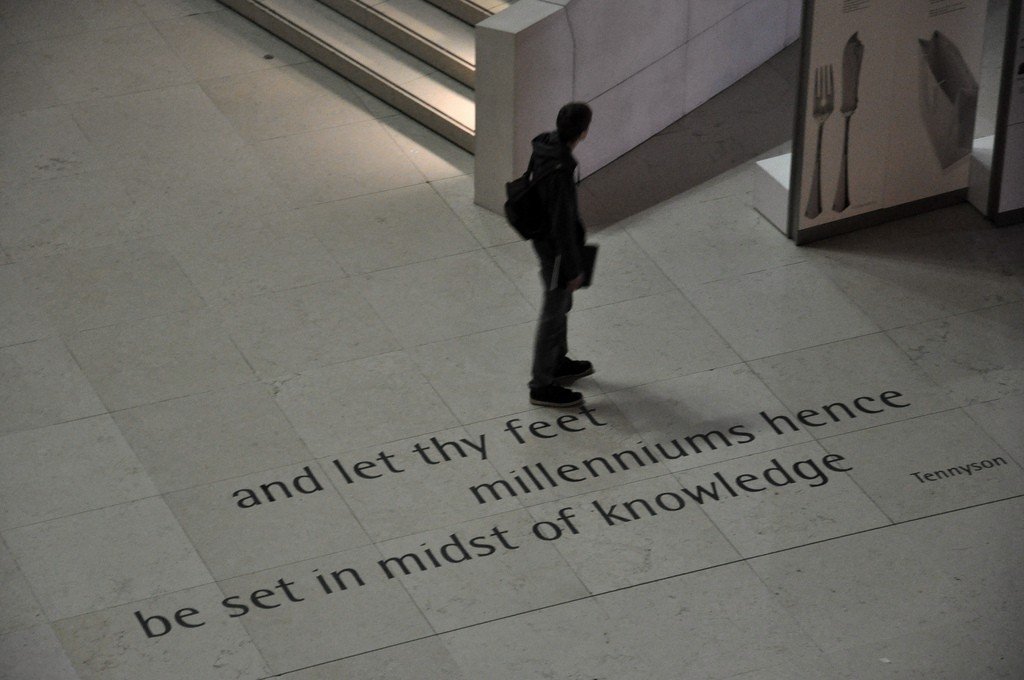
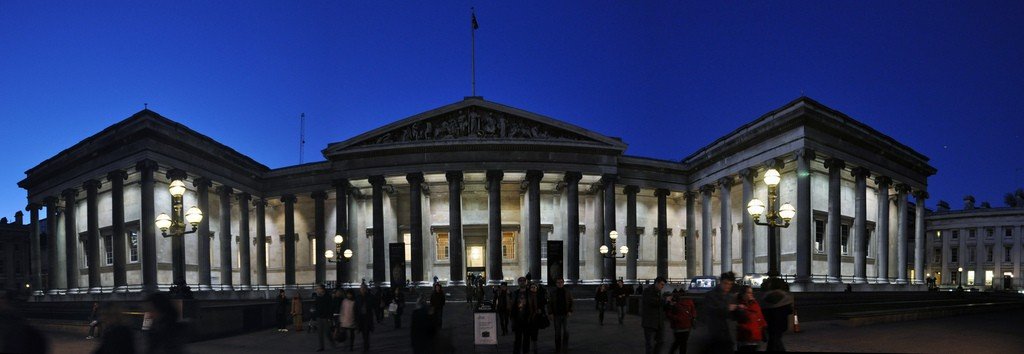
History
The modern museum building, dating back to 1823, is a fine example of 19th century neoclassical architecture. The foundation of the exhibition was laid in 1753, when Hans Sloan offered a huge collection of art and antiquities to Parliament for considerably less than their combined value. Gradually other collections were added, including the Royal Library donated by George II. Soon the museum could no longer accommodate everything, and Robert Smirke began work on the building we see today.
.
In the 1880s, the natural science collections were moved to a new building in south Kensington, and the British Museum in Bloomsbury was able to give greater attention to collecting, housing and protecting treasures from around the world. In recent years, new changes have taken place – the British Library has been moved outside the building, the space it previously occupied has been transformed into a courtyard with a huge glass and steel roof designed by Norman Foster. The new space opened in 2000. At its center is the famous domed reading room – now home to a multimedia information center as well as a public reading room.
.Exhibits
The museum has many priceless artifacts, including antiquities from the Parthenon, the Rosetta Stone, a stunning collection of ancient Egyptian art, a giant head from Easter Island, and many other treasures. In total, including engravings and drawings, the museum has more than 7 million objects.
.
The museum exhibit is spread over three floors: rooms 1- 34 are on the main, first floor, rooms 35-73 and 90-94 upstairs, rooms 77-89 in the basement. Of course, it is impossible to see everything in one visit, so we advise you to buy a floor plan at the information desk and choose what appeals to you most..Most Interesting
Hall 8 exhibits the superb El Gene marble reliefs. These are fragments of a 5th century BC Parthenon frieze that were brought from Athens to London in 1801-1804 by Lord El-jin, the British ambassador to Constantinople. In 1816 the British government bought the marbles from him for $35,000, and since then the Greek authorities have been insistently, but so far to no avail, demanding that they be returned to their homeland. The frieze is magnificent: it depicts horsemen during a solemn procession of sacrifice. Hall 14 displays art from the Hellenistic period, including a marvelous golden wreath of oak leaves on which sit tiny golden cicadas and a bee (circa 350 – 300 BC).
.In Hall 7 you will see a reconstruction of a 5th century BC tomb monument in the form of an Ionic portico with statues of nereids, discovered near Xanf in western Turkey.
.The Rosetta Stone was named after the city at the mouth of the Nile where it was found in 1799
.Hall 25 exhibits the famous Rosetta Stone. It is a basalt slab on which is carved a decree of a council of priests from 196 B.C. in parallel Greek and Ancient Egyptian (in demotic and hieroglyphic writing).
.The discovery of the stone allowed scientists to unravel the mystery of Egyptian writing.
.Hall 33 features works of Oriental art, including Tibetan inlaid jewelry, 16th-century Vietnamese altar vases, 8th-century Indian statues of gods and demons, Chinese tomb statues of warriors and horses, and Ming-era jasper and fragile vessels.
.In the Mexican gallery in Room 33c, you can see amazingly colorful, internally powerful mosaics and sculptures of the Aztecs and Mayans.
.The ceremonial helmet from the Sutton Hoo burial site features a bronze gilt mouthpiece and garnet-encrusted eyecups.
Halls 37 and 68 show hoards of gold coins, bracelets, and other jewelry found during excavations throughout the British Isles. Room 41 contains a treasure from Sutton Hoo, Suffolk: the funeral boat of a Saxon king found in 1939. Among the exhibits are a sword decorated with precious stones, gold scabbard plates, a helmet covering the entire face with gilded bronze plates, fragments of a lyre, a huge bronze cauldron, a sceptre with a bronze stag and a gold purse decorated with cloisonné enamel.
.
Be sure to visit Hall 42, which houses the Lluis chess. The chess pieces were carved in the 12th century on the Isle of Lewis from walrus bone in the form of broad-faced warriors, bishops and kings. Next go to Room 49 and view the Mildenhall Hoard, found in Suffolk during the war years. These are Roman silver vessels made with great skill, including a large dish with a scene of the worship of Bacchus.
.
In Room 61 you will see ancient Egyptian mummies in sargophagi exquisitely painted with figures of cats, snakes, ibises, crocodiles, falcons and humans. In adjacent halls are examples of Egyptian jewelry and Coptic art.
www.thebritishmuseum.ac.ukAdmission to the British Museum is free to all visitors (except for exhibitions)The museum is open daily 10.00-17.30, on Fridays until 20.30.Nearest tube Holborn or Tottenham Court Road, Russell Square